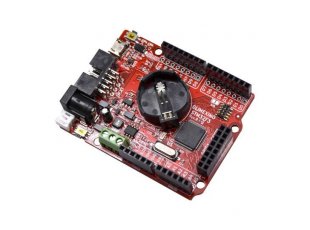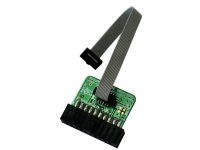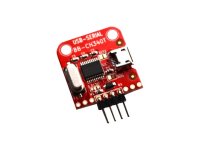OLIMEXINO-STM32F3




Select Product Variant
- OLIMEXINO-GD32F3
- OLIMEXINO-STM32F3
| Price | 11.95 EUR |
|---|---|
| 10 - 49 pcs | 11.35 EUR |
| 50 - 10000 pcs | 10.76 EUR |
OLIMEX-STM32F3 is OSHW certified Open Source Hardware with UID BG000074
New version with GD32F303RCT6 compatible MCU is available, but the chip has some differences.
FEATURES
- STM32F303RCT6 or GD32F303RCT6 256KB Flash 40KB RAM
- Industrial grade (-40+85)°C operating temperature
- Micro USB connector for powering and programming
- Power jack for external power supply (4.2-40)V DC
- Li-Po battery charger and connector
- RTC battery with CR2032 holder
- Micro SD card
- CAN interface and driver
- Arduino headers
- UEXT connector
- Bootloader button
- Reset button
- JTAG connector
- Dimensions: (68 x 53) mm
DOCUMENTS
FAQ
- What are the differences between OLIMEXINO-STM32F3 and OLIMEXINO-GD32F3?
-
Only the main chip is different but this leads to a few major differences between the two boards. The major differences affecting the user are:
1) GD32F303 chip has no built-in USB bootloader, only serial one (USART0 or USART1 can be used to re-program the board without programmer). In order to program the board you might need either USB-serial adapter cable or JTAG/SWD programmer (with proper cabling to fit the 10pin, 0.05” step on-board connector). You can find adapter "ARM-JTAG-20-10" at our web-site;
2) Memory maps are different. If you compare the memory organization and maps in the datasheets of both chips you would notice the memory organization is different. This effectively makes almost any binary made for the STM32F3 version incompatible with the GD32F3 version. Also renders some of the tools unusable. For example, for Arduino you would have to use special core for GD32 chips, instead of the official STM32 duino project;
3) The built-in serial uses the I2C pins at the UEXT (e.g. I2C and UART are swapped in the GD32F3 board – the UEXT pins 3 and 4 are I2C and pins 5 and 6 are UART).
- What is the major hardware difference between Arduino boards with AVR chip and ARM chip?
- Unlike most Arduino-compatible boards with AVR chip, the Arduino-compatibile boards with ARM chip run at 3.3V. The maximum voltage that the I/O pins can tolerate is 3.3V. Applying voltages higher than 3.3V to any I/O pin could damage the board.




